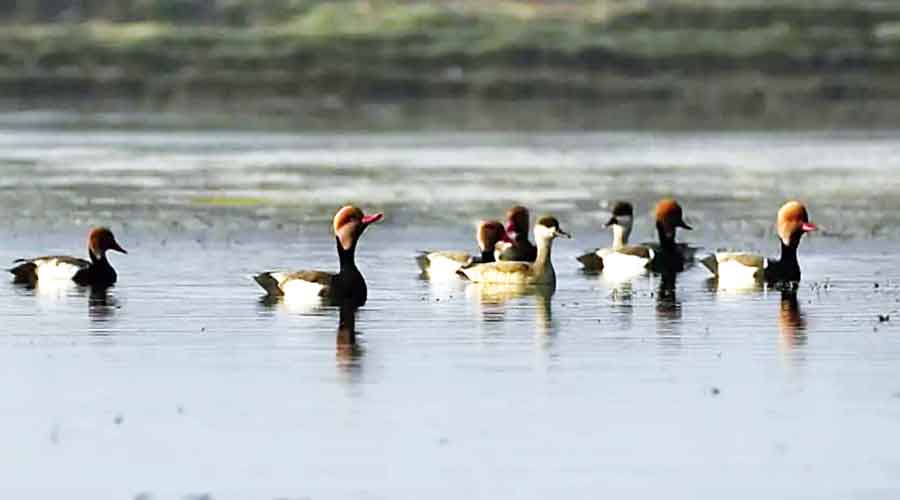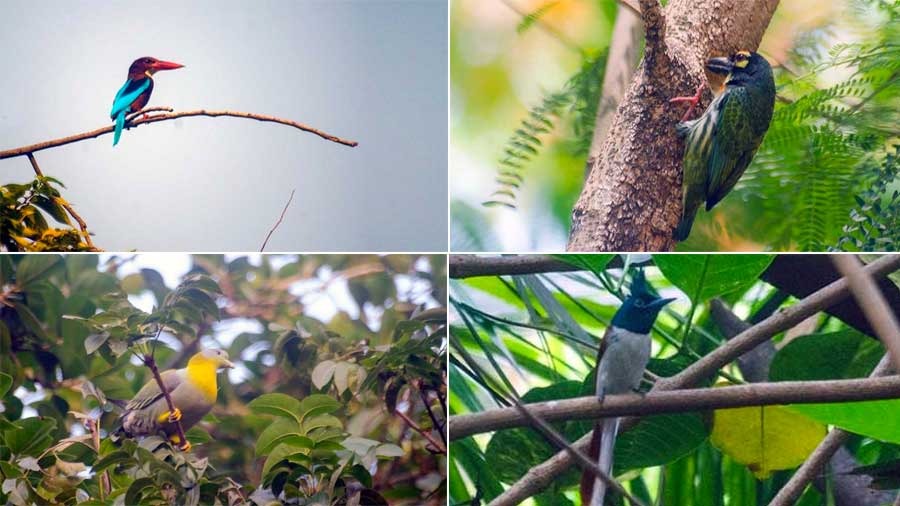A number of winter migratory birds have arrived at the Purbasthali lake, a hotspot for the winged visitors located about 130km from Kolkata.
Among the guests who have already arrived are Red-crested Pochard, Wood Sandpiper, Brown Shrike and Osprey.
Spread over 11sqkm, the oxbow lake in Purbasthali in Purba Bardhaman district is one of the most important destinations in south Bengal that host migrants during the winter and is home to thousands of local birds throughout the year. “Among the winter arrivals already are Red-crested Pochard, Wood Sandpiper, Brown Shrike and Osprey. These birds are trans-Himalayan migrants. They come over to this part of the subcontinent to escape the harsh winter climate in the breeding places,” said Shubhankar Patra, a veteran birdwatcher.
Patra has not visited Purbasthali yet this season. He was sent pictures of birds sighted at the lake on Sunday by The Telegraph.
About 500 birds, including migrants and local birds, can be seen at the lake now. “The waterbirds are mostly nocturnal. They venture out during the night in search of food and spend the day resting in and around the water bodies,” said Patra.
The website of the BirdLife International states that Osprey “inhabits the areas around shallow waters, being sufficiently tolerant of human settlement to persist in suburban and sometimes urban environments.”
Red-crested Pochard “inhabits inland deep fresh or brackish reed-fringed lakes, rivers, or saline and alkaline lagoons in open country, also occurring (less often) on estuaries, river deltas and other sheltered coastal habitats on passage or during the winter”, states the website.
Birdwatchers said most species of birds were usually seen in the middle of January at Purbasthali. Among the local birds that are seen in large numbers are Lesser Whistling Ducks, egrets, herons, cormorants and Kingfisher.
But birdwatchers and conservationists were worried about the gradual destruction of birds’ habitat.
Raja Chatterjee, a conservationist, said there used to be around 35,000 birds in the peak of winter in the late 1980s. “Nowadays the about 15,000 birds are seen in the peak of winter,” said Chatterjee.
Both Chatterjee and Patra said that the construction of a clay walkway connecting an island on the lake with the mainland would have devastating consequences for the lake.
“The walkway blocks the passage of water from the river into the lake. If this is not dismantled the lake will slowly die,” said Chatterjee.

